Simon Ameer-Beg | King’s College London | London, England
“Protein-protein interactions at the cellular interface: Biophotonics approaches to quantitative FRET measurements”
Scientific Talks, Session IX | Wednesday, September 14 | 11:10 – 11:40

For high precision FLIM, time-correlated single photon counting (TCSPC) is unparalleled in its measurement accuracy particularly for multi-exponential decays. Until recently, high speed FLIM could only be performed using modulated or time-gated image intensifier systems as TCSPC was fundamentally limited with respect to photon counting rate in implementations of laser scanning microscopy. This has restricted its use in a number of time-critical applications including live cell imaging.
We have previously demonstrated multifocal multiphoton fluorescence lifetime imaging microscopy (MM-FLIM) for applications utilizing TCSPC which increases the acquisition rate of high-resolution fluorescence lifetime imaging by a factor of 64 by parallelizing excitation and detection. The system consists of a two-dimensional array of ultrafast beams which are then optically conjugated with a Megaframe camera consisting of 32×32 individual 10-bit time-to-digital convertor (TDC) array with integrated single-photon avalanche diodes (SPADs), each of which operates in TCSPC mode and provides FLIM capability.
I will provide an overview of our work on 2-photon imaging, high-speed functional imaging and report the development of a novel massively parallelised multifocal multiphoton FLIM laser scanning high speed microscope that we term SWept Array Microscopy (SWARM) with the ability to acquire ~250 million photon arrival events per second. This allows us to operate in full frame mode (32×32 beamlets) unlocking more potential from the Megaframe camera for FLIM imaging. Utilising a diffractive optical element to generate the beamlet array and an innovative scanning approach we have been able to simplify and reduce the optical footprint of the system. We demonstrate the applicability of the system to live cell imaging using biosensors for tension in cancer cells and in iPSC derived neuron cultures. We will demonstrate the ability of the new system to observe dynamic changes in fluorescence lifetime at sub-second acquisition times with minimal photo-toxicity compared to single beam scanning approaches.
